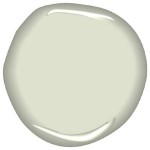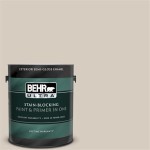How to Paint Landscape Rocks with Acrylic
Painting landscape rocks with acrylics offers a creative and durable way to enhance outdoor spaces. Rocks, whether natural or purchased, provide a versatile canvas for artistic expression, transforming ordinary stones into eye-catching features within a garden, pathway, or water feature. Acrylic paints, known for their vibrant colors, quick drying time, and weather resistance, are ideally suited for this purpose. This article will detail the process of preparing and painting landscape rocks with acrylics, ensuring a long-lasting and visually appealing result.
Selecting the right rocks is the initial step. Consider the size, shape, and texture of the rocks in relation to the intended artwork and the surrounding landscape. Smooth, flat surfaces are easier to paint intricate designs on, while rough, irregular rocks can add character to simpler, more abstract artwork. The rocks should be free of loose debris, soil, and other contaminants that could interfere with paint adhesion. The size of the rock will also dictate the level of detail achievable and the overall impact of the finished piece.
Choosing the right acrylic paints and supporting materials is crucial for the project's success. Artist-grade acrylics generally offer superior pigment concentration, lightfastness, and durability compared to student-grade options. However, either option can be viable depending on the desired longevity and aesthetic requirements. Alongside acrylics, a suitable primer, sealant, and an assortment of brushes in various sizes are necessary. The primer enhances paint adhesion, while the sealant protects the artwork from the elements. Brushes with fine tips are ideal for detailed work, while larger, flat brushes facilitate broader coverage.
Preparing the Rocks for Painting
Proper preparation of the rocks is fundamental to ensuring optimal paint adhesion and longevity. Skipping this step can lead to paint chipping, peeling, or premature fading. The process involves cleaning, priming, and potentially sanding the rock surface.
Cleaning the rocks thoroughly is the first stage. Remove any dirt, moss, algae, or other debris using a stiff brush and soapy water. Rinse the rocks thoroughly with clean water and allow them to dry completely. For rocks with stubborn stains or residues, a diluted solution of bleach or vinegar may be used, followed by a thorough rinsing. Ensure the rocks are completely dry before proceeding, as moisture can hinder paint adhesion.
Priming the rocks creates a uniform and receptive surface for the acrylic paint. Apply a layer of exterior-grade acrylic primer to the entire surface of the rock. This primer acts as a foundational layer, promoting better adhesion and preventing the paint from being absorbed unevenly into the porous rock surface. Apply the primer in thin, even coats, allowing each coat to dry completely before applying the next. Two coats of primer may be necessary for highly porous or textured rocks. The primer should be allowed to cure fully according to the manufacturer's instructions before proceeding to the painting stage. The color of the primer can also influence the final appearance of the artwork; a white primer will result in brighter colors, while a gray or black primer can mute the tones.
Sanding may be necessary for rocks with particularly rough or uneven surfaces. Use a fine-grit sandpaper to smooth any sharp edges or protrusions that could interfere with the painting process. After sanding, remove any sanding dust by wiping the rock with a damp cloth and allowing it to dry completely. Sanding enhances the overall smoothness of the surface, facilitating a more even application of paint and improving the final appearance of the artwork.
Painting Techniques and Design Considerations
Once the rocks are properly prepared, the painting process can commence. Acrylic paints offer versatility in terms of application techniques, allowing for a wide range of artistic styles and effects. Consider the design beforehand, sketching out ideas on paper or directly onto the rock with a pencil. This helps visualize the final product and plan the color scheme.
Start with a base coat, if desired. This provides a uniform background color upon which to build the design. Apply the base coat in thin, even layers, allowing each layer to dry completely before applying the next. Choose a color that complements the overall design or serves as a neutral backdrop. The base coat can also help to block any underlying stains or inconsistencies in the rock surface.
Employ different brush techniques to achieve various effects. Fine-tipped brushes are ideal for creating intricate details, such as lines, dots, and delicate patterns. Flat brushes are suitable for blending colors and creating smooth gradients. Stippling, dry brushing, and layering are other techniques that can add texture and depth to the artwork. Experiment with these techniques on scrap pieces of rock or paper to gain proficiency before applying them to the final piece.
Consider the interplay of colors and their impact on the overall design. Complementary colors create contrast and vibrancy, while analogous colors evoke harmony and serenity. Experiment with different color combinations to achieve the desired mood and effect. Acrylic paints can also be mixed to create custom colors, expanding the range of possibilities. Remember to allow each layer of paint to dry completely before applying the next to prevent colors from blending unintentionally.
Incorporate natural elements into the design. Landscape rocks are, by definition, part of the natural environment. Drawing inspiration from the surrounding flora and fauna can create a cohesive and aesthetically pleasing artwork. Consider painting flowers, leaves, butterflies, birds, or other natural motifs onto the rocks. These elements can be stylized or rendered realistically, depending on the desired aesthetic.
Sealing and Protecting the Painted Rocks
Sealing the painted rocks is a crucial step in ensuring their longevity and resistance to the elements. Acrylic sealant forms a protective barrier that shields the paint from moisture, UV radiation, and abrasion. Selecting the right sealant and applying it properly are essential for preserving the artwork.
Choose an exterior-grade acrylic sealant specifically designed for use on painted surfaces. These sealants are formulated to withstand the rigors of outdoor environments, providing long-lasting protection against fading, cracking, and peeling. Opt for a sealant with UV inhibitors to further enhance its resistance to sunlight. Available in matte, satin, and gloss finishes, the choice of finish depends on the desired aesthetic appearance. A matte finish provides a non-reflective surface, while a gloss finish enhances the vibrancy of the colors.
Apply the sealant in thin, even coats, following the manufacturer's instructions. Use a brush or spray applicator to ensure thorough coverage of the entire painted surface. Allow each coat to dry completely before applying the next. Two to three coats of sealant are typically recommended for optimal protection. Pay particular attention to edges and corners, as these areas are more susceptible to wear and tear. Avoid applying the sealant in direct sunlight or during periods of high humidity, as these conditions can affect its drying time and adhesion. Ensure the sealant is fully cured before placing the painted rocks in their final location.
Regular maintenance can further extend the life of the painted rocks. Periodically inspect the artwork for any signs of damage, such as chipping, cracking, or fading. Touch up any damaged areas with acrylic paint and reapply the sealant as needed. Clean the rocks regularly with a soft brush and soapy water to remove dirt, grime, and other debris. Avoid using harsh chemicals or abrasive cleaners, as these can damage the paint and sealant.
Consider the placement of the rocks in the landscape. Avoid placing them in areas that are constantly exposed to direct sunlight or extreme weather conditions. Providing some form of shelter, such as under trees or shrubs, can help to prolong their lifespan. Placing the rocks on a well-drained surface can also prevent moisture from accumulating underneath them, reducing the risk of damage. By following these guidelines, the painted landscape rocks can remain a vibrant and artistic addition to the outdoor environment for years to come.

Acrylic Painting Tutorial On How To Paint Basic Rocks Sunlight Easy For Beginners By Jm Lisondra

How To Paint Rocks And Cliffs Draw Academy

River Rocks Landscape Acrylic Painting Tutorial

How To Paint Rocks And Cliffs Draw Academy

How To Paint Rocks Stones In Acrylic Painting Tutorial

How To Paint Rocks And Cliffs Draw Academy

How To Paint Rocks And Cliffs Draw Academy

Realistic Rocks How Do You Paint Them

How To Paint Rocks And Cliffs Draw Academy

How To Paint Water And Rocks Step By Easy Acrylic Painting Tutorial
Related Posts








